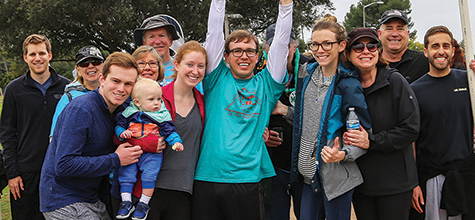
Explaining Brain Injury to Your Child
Chapter Four, The Caregiver’s Journey on tbi.cemmlibrary.org
Having a parent with a TBI can be frightening for a child who looks to them to provide strength and safety.
A parent with TBI may no longer act the same as they did before the injury. They may be angry, depressed, or uncertain. They may not be able to speak or walk, and they may not be able to do all the same things they did before they were injured (for example, go to work, pick up the kids from school, play on the playground). You can help your children by explaining TBI in a way that they can understand, or you can ask a healthcare provider to talk with your children.
As a result of the changes caused by the injury, the special parent-child bond that existed previously has probably changed, at least to some degree.
Children may be confused and upset about what is going on. This could be due to worry about a parent’s condition or concerns about changes in their parents’ relationship. It could also be due to financial strains, or simply adjusting to the new “normal” (in other words, the new way of life following the TBI). Be sure to communicate with your child that they are not to blame for the TBI – many children will assume they somehow contributed to the injury and will carry some sense of responsibility for it. If your child appears to be anxious or depressed for a long time, or they begin taking on risky behaviors, seek professional help.
It is important to recognize that your children are grieving, just as you are – they are grieving the loss of the parent’s former “self” and the abrupt changes that have taken place. They may withdraw from social activities with peers, have mood swings, become withdrawn or disruptive, do poorly in school, and show other behavioral problems.
Children also need time and space to be kids. Allow them time to think, play, talk, or just hang out – don’t smother them with too much information or attention over the injury – but be sensitive to their questions and concerns. Build new family routines, and keep an eye out for signs that your child is not coping well.
Some children may need to take on some caregiving tasks for the parent or for younger children in the family. Children who care for parents or other relatives may experience conflict over the reversal of roles between parent and child. Others will find it helpful for them to play a supportive role.
Make sure any tasks that your child takes on to help around the house or with caregiving activities – household chores or meal preparation, for example – are suitable for their age. Strive as much as possible to find other adults to help you, rather than relying on your children to play a major caregiving role.

How Can I Tell My Child about TBI?
It is difficult to explain TBI to a child. Yet it is vital to tell your child what is going on. Some adults try to protect children from the truth because they think they are too young to understand. Children of almost any age are aware that something is wrong and they want to know what is happening.
Communicate in an age-appropriate way what has happened to the service member or veteran with TBI. Protecting your children by withholding information may backfire. Children have active imaginations that may create a scenario worse than reality.
How you tell your child about TBI depends on the age of the child. Here are some suggestions for how to explain TBI to a child:
Brain injury changes people. These changes can be confusing. Try to remember that the changes you see are caused by the brain injury. You can still love and care about the person regardless of the brain injury.
CLICK HERE to read the original article

